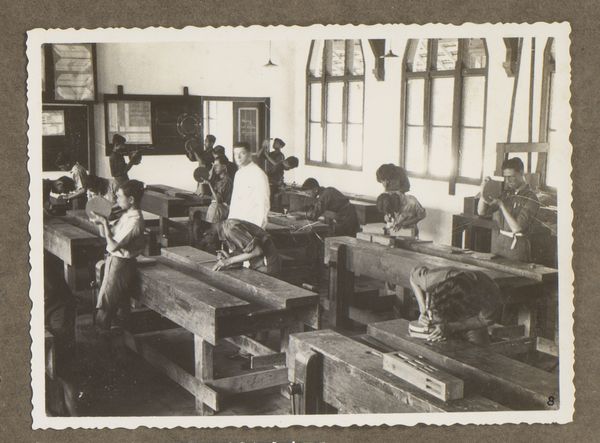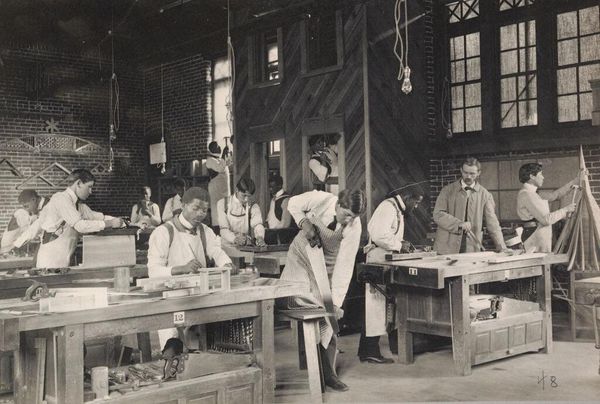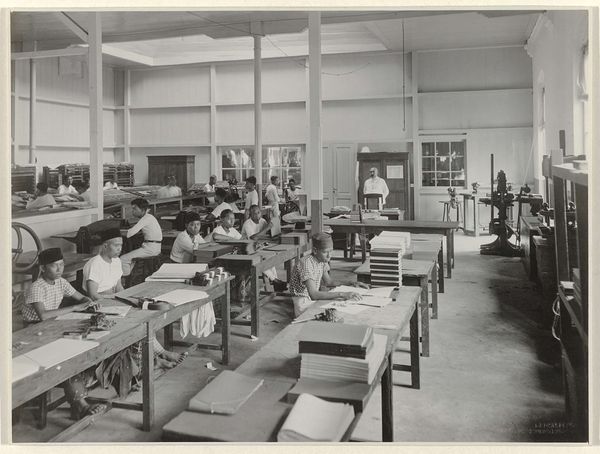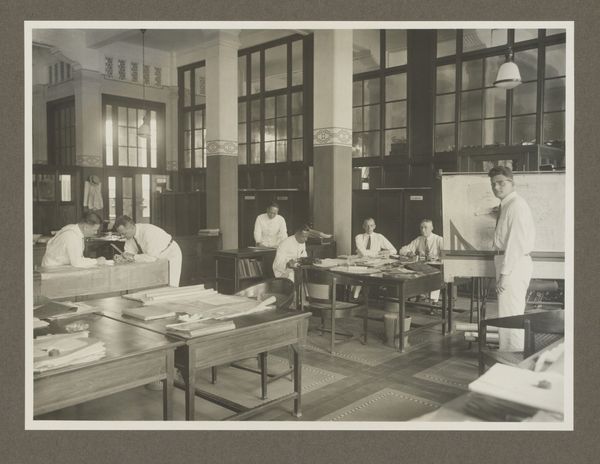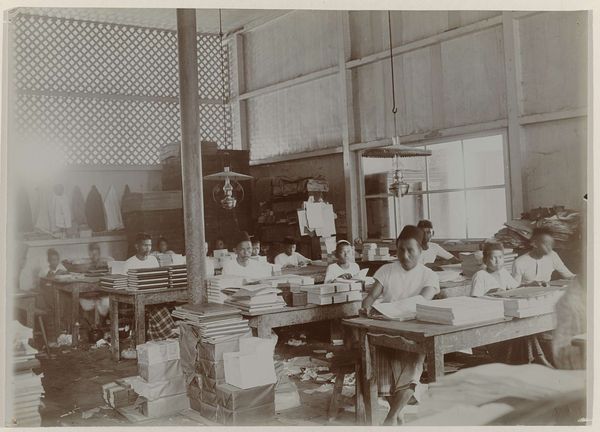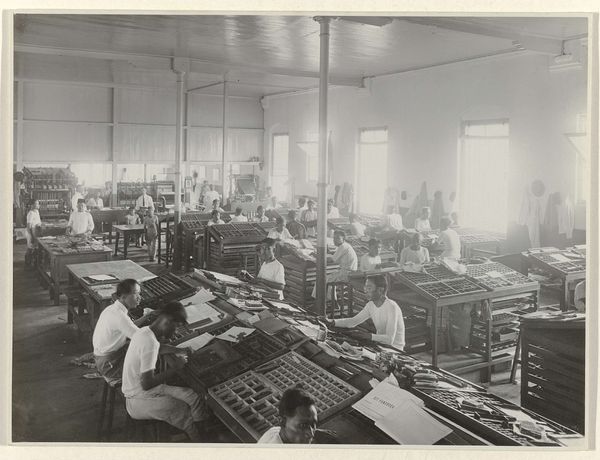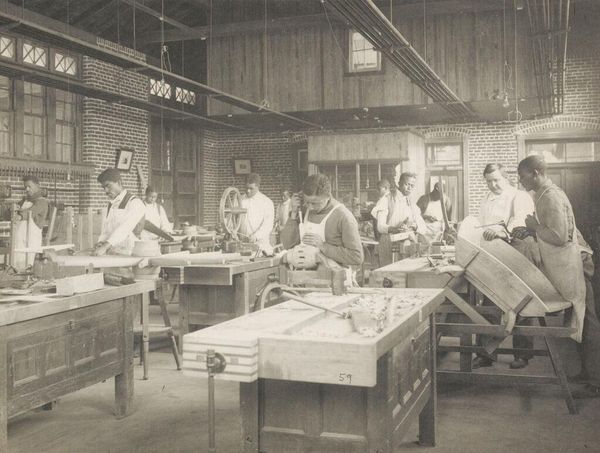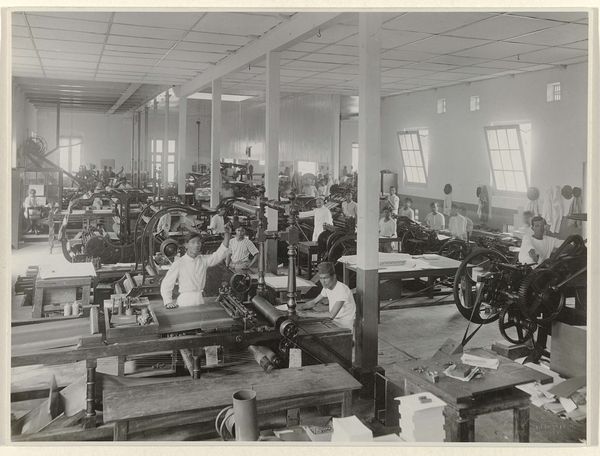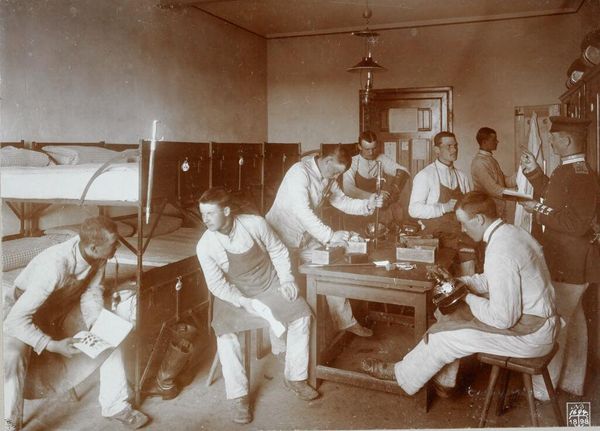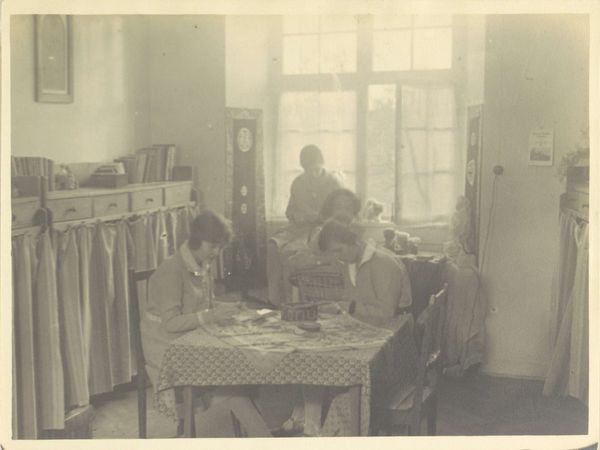
print, photography
#
portrait
#
print photography
# print
#
archive photography
#
photography
#
historical photography
Dimensions: height 89 mm, width 137 mm
Copyright: Rijks Museum: Open Domain
Curator: Let's take a look at this photograph titled "Drukkerij van de Deli Courant." We know it was taken sometime between 1900 and 1935, but the photographer remains anonymous. Editor: The immediate impression is one of somber industry. Look at those stacks of papers dominating the foreground and the serious expressions. It feels less like observation and more like testimony. Curator: Indeed. Note the composition—the rigid, almost oppressive geometry of the room itself: the pillars, the suspended lamps, the linear arrangement of the tables. There is a very interesting distribution of light and shadow here; observe the strong verticals and horizontals creating this ordered space that feels strangely static. Editor: Yet within that seemingly structured order, I'm drawn to the individuals. What were their working conditions like? This feels like an incredibly important visual record of labor, class, and likely colonial power dynamics at play. The expressions seem guarded. Are they being surveilled even within the frame? Curator: Interesting point. While those sorts of things may remain unknown to us, we *can* appreciate how this arrangement reinforces a hierarchical system; everyone's gaze converges on something just out of view and forces us to see the faces. There is an order of recession happening: faces in front that grow steadily out of focus further and further back in the space. Editor: And this could, as a result, reflect power structures embedded in labor relations. These are clearly not the owners or the managers but the workers doing manual labor under what were probably harsh conditions and that anonymity, too, says so much. I wish we knew more. Curator: We may not know the specifics but consider how the photographer uses light, line and form. Editor: Ultimately, this work sparks further questions about exploitation, representation, and resistance in historical images like this. Curator: Quite right. It is a photograph with a remarkable ability to fuse pure formalism with very real implications of the world. Editor: Absolutely. One gets lost in how so many social dynamics coalesce within this photographic capture of everyday life and labor from the past.
Comments
No comments
Be the first to comment and join the conversation on the ultimate creative platform.
